Many garden paths are ordinary, designed simply to get you from one place in the garden to another. Grass paths, the simplest and least costly type of path to make, appear in gardens so routinely that they almost disappear. Occasionally, though, you’ll see a path that stands out.
The grass path below is an example. It is well maintained and nicely curved but what lifts it out of the ordinary is the white line that edges it. That line draws your eye along the curve and makes the path itself impossible to ignore.
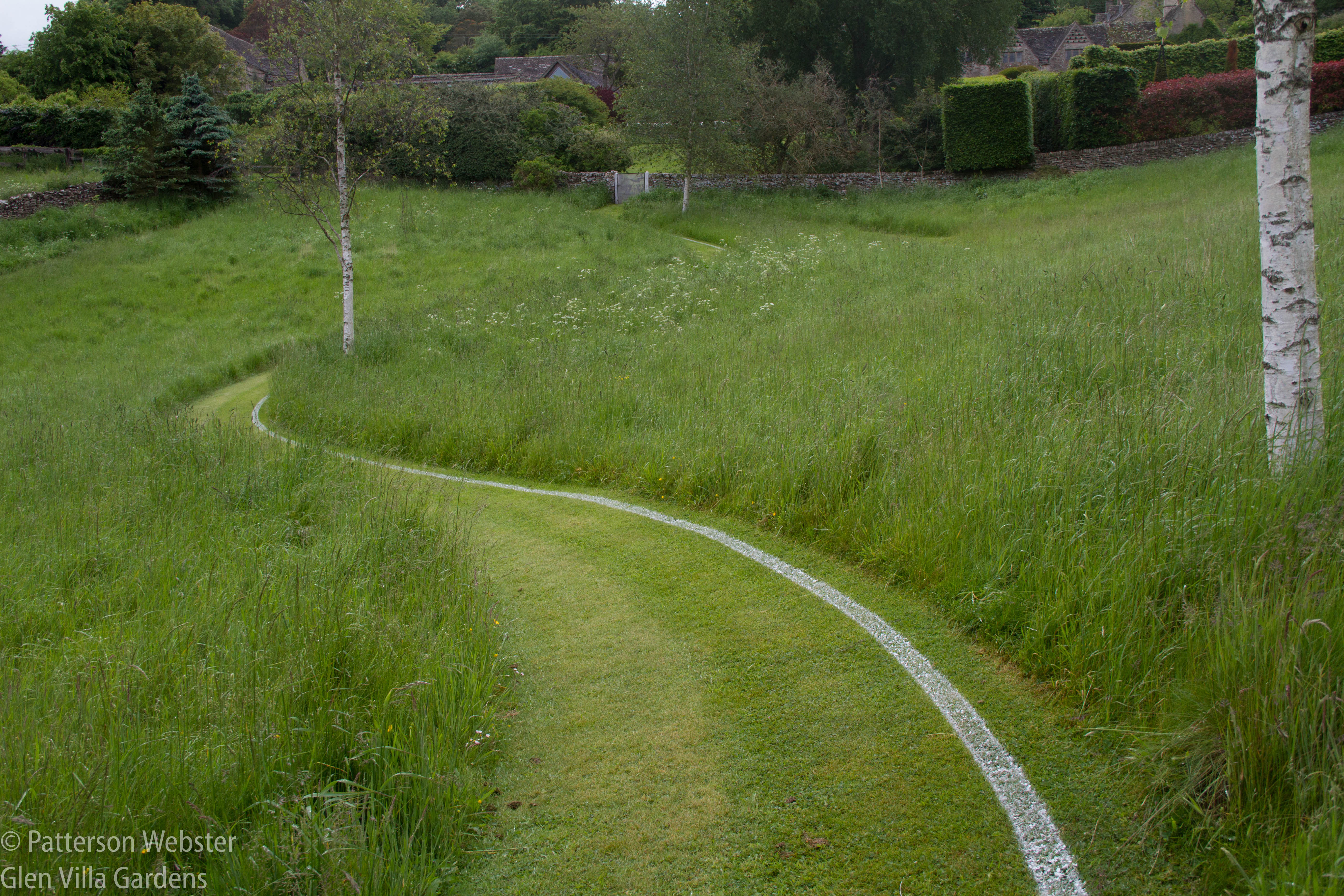
A curving path at Througham Court leads across a field to a gate into the garden proper.
Paths with plants dotted here and there also draw the eye, whether there are many plants …

The combination of regular and irregularly shaped stones along with the plants that break up the stones makes this path at Malverleys particularly appealing.
or only a few.
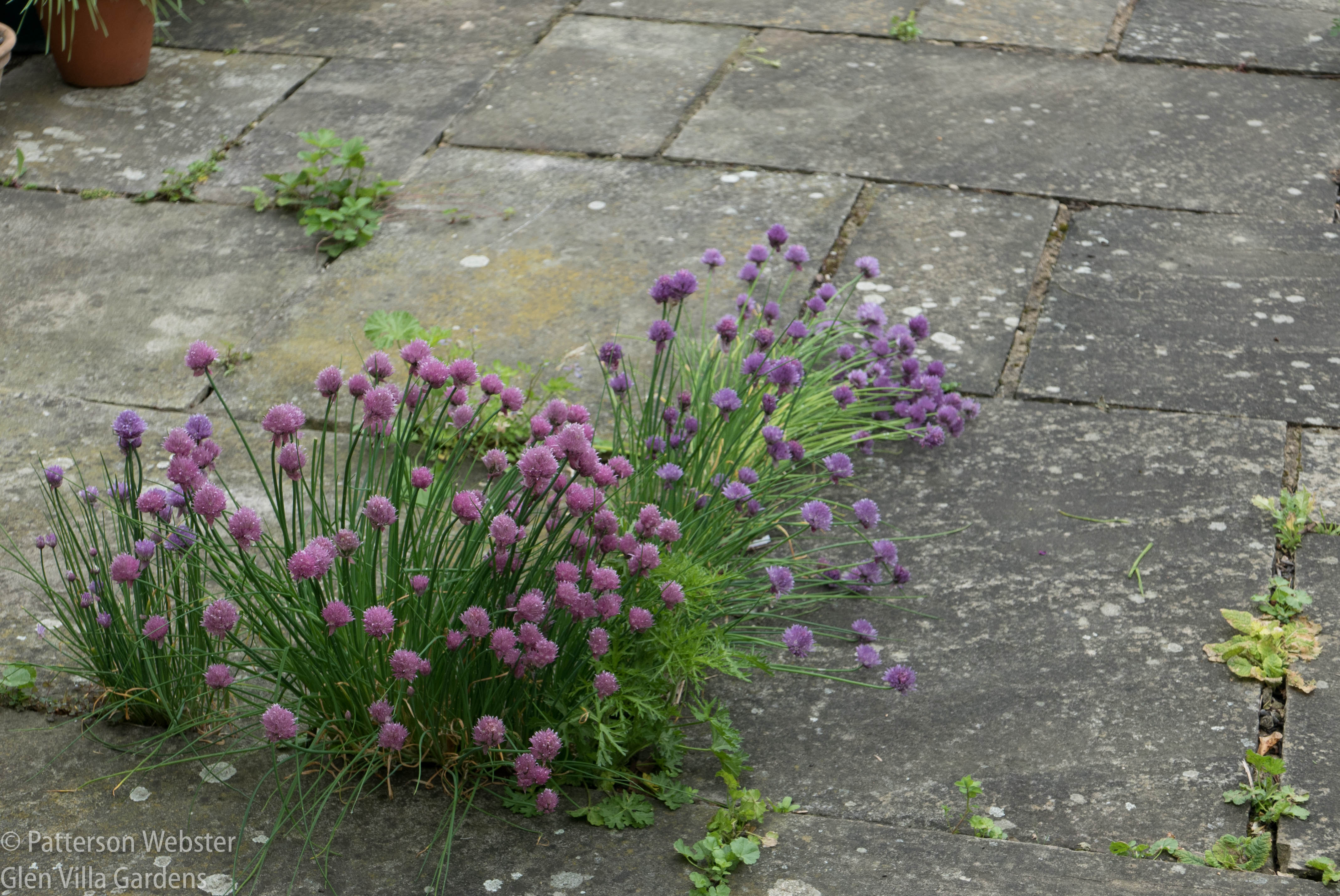
Fewer clumps make a stronger statement in this path at Spilsbury Farm, the garden of Tania and Jamie Compton.
At Hatfield House, a broad gravel path is lifted out of the ordinary by the pattern of stones that border it. At first glance the borders look identical but they are not, any more than the flowers on the left are identical to the grass on the right. The different pattern of stones, left and right, sets up a rhythm that makes the path dynamic and more interesting than if the borders were the same.
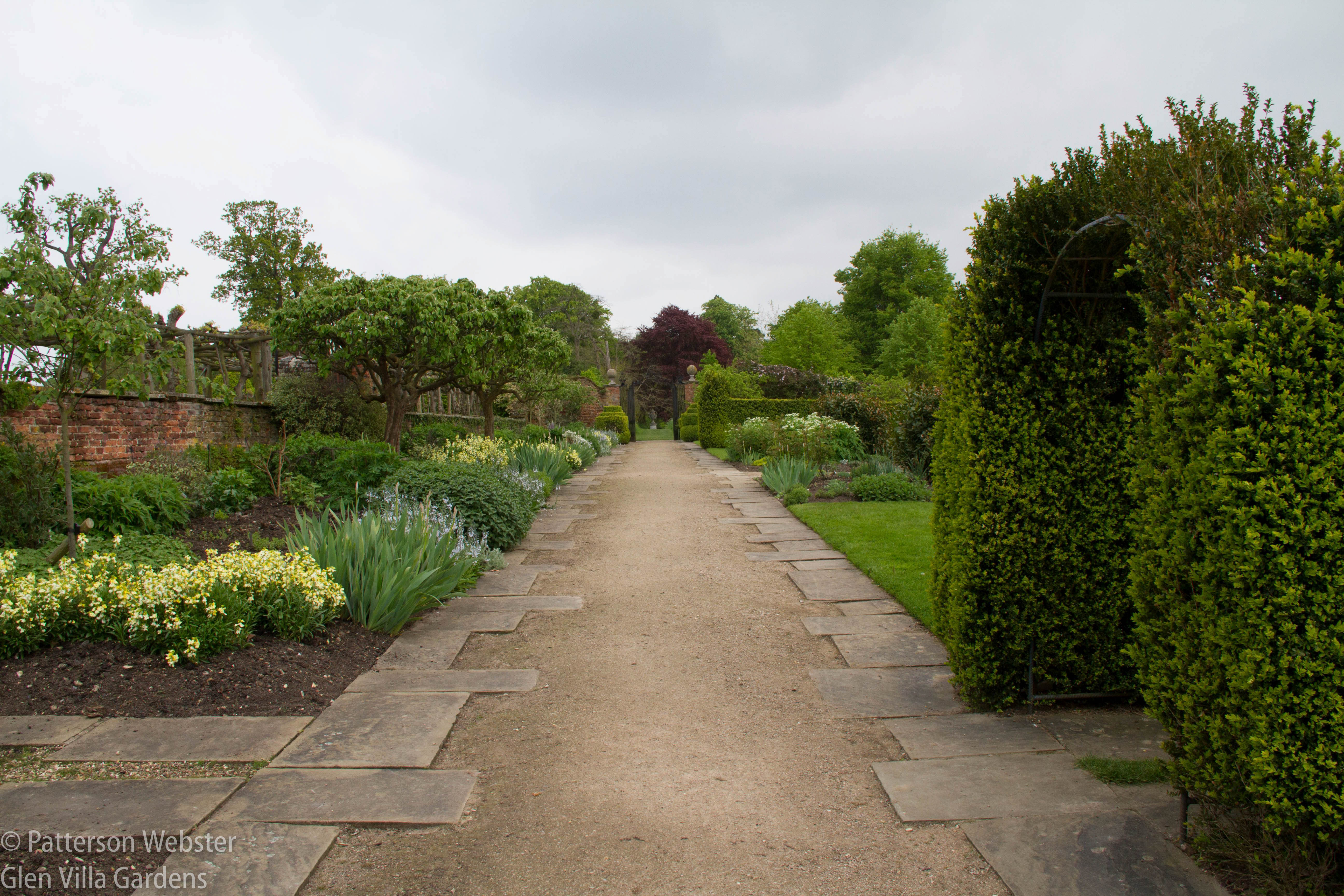
Would you have used the same pattern on both sides of this path? Did you notice the difference at first glance?
In another part of the garden, another path varies the ‘in and out’ rhythmic theme. This second path is narrow and is bordered by tall hedges that make it feel even narrower. Using grass to break up the stone not only repeats the green of the hedges but also makes the walkway more inviting and less austere. A subtle touch is the contrast between the straight lines of the stones and the hedge and the curved lip of the fountain and the arched hedge above it.
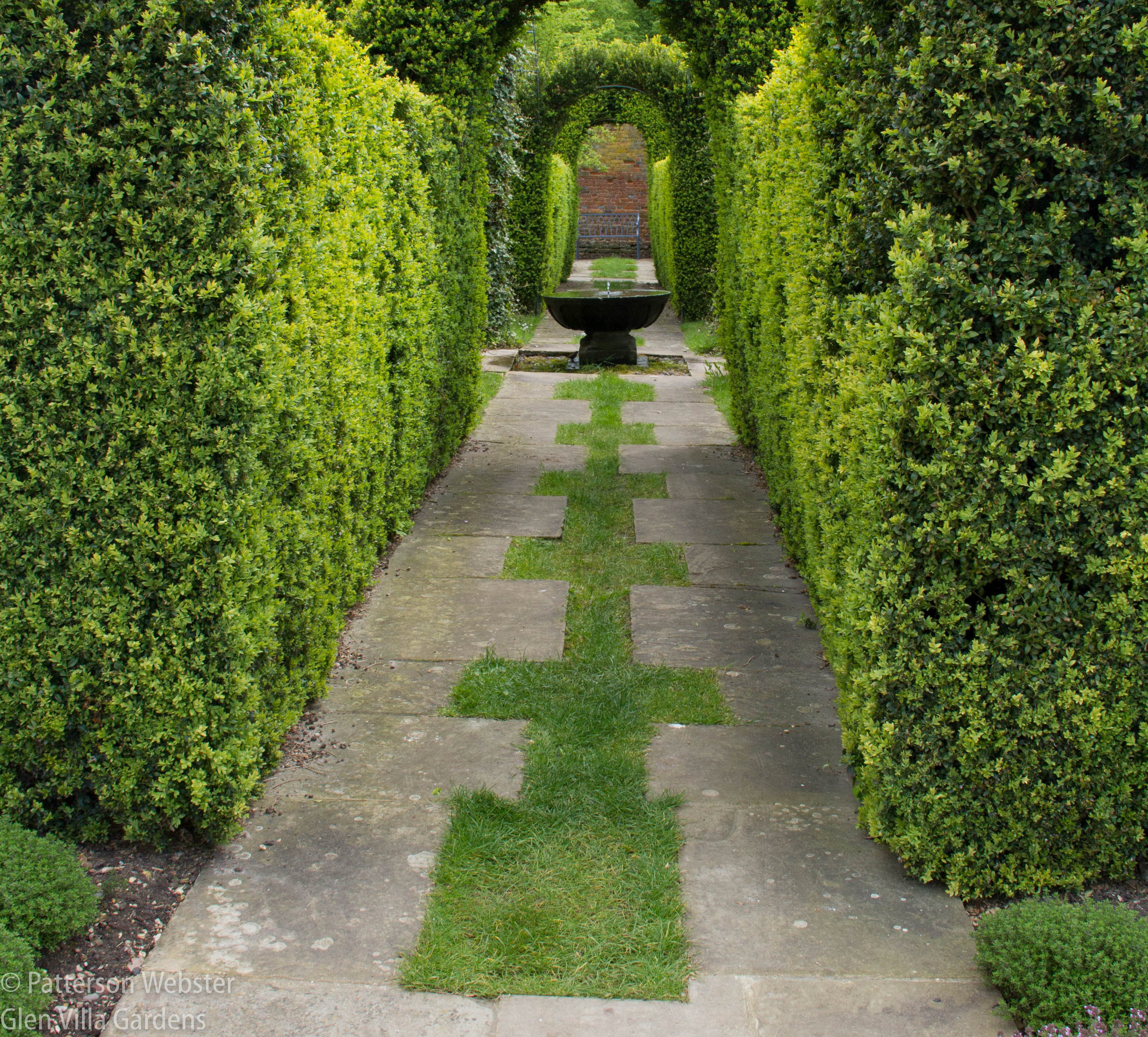
At first the grass sections appear to be identical but the one in the foreground is larger than the others. I’m sure this was done deliberately to mark the beginning of the path. Although it isn’t clear in the photo, arched hedges appear on all four sides of the fountain where the paths intersect.
Perhaps the most unusual and most affecting path I’ve ever walked is the one at the Kennedy Memorial at Runnymede, England, designed by Geoffrey Jellicoe in honour of John Kennedy. A stone path leads through woods left in their natural state to a carved stone at the top of the hill. There, a path with an irregular edge similar to those above leads across a flat stretch of grass.

Square stone blocks are separated by thin rectangular one, . The space between the larger blocks creates a straight line that pulls your eye forward. The indentations of grass along the sides suggests the crenellations on a castle wall.
This path, so simply designed, is very much in keeping with the tone of the memorial itself. But the path that touched my heart was the one that visitors use as they climb the hill. Jellicoe designed the memorial with John Bunyan’s 17th century allegory Pilgrim’s Progress in mind, intending that people climbing the hill feel as if they are modern day pilgrims. Each detail of the climb has meaning. There are 50 steps, as there are 50 states. Each of the 60,000 granite stones, or setts, that make up the path is hand-cut, slightly different from every other. Cobblestones that widen or narrow for no apparent reason edge the path and because the setts were laid directly on the ground, the path ripples like an echo of the uneven surface beneath.
According to Tom Turner, the English landscape architect and garden historian, several lengths of the path were laid in a standard manner. When Jellicoe saw the work he asked the craftsman building the path to imagine that the stones were a crowd attending a football match. The stones were the front of the crowd, surging and falling back, only to surge again. With that in mind, the work began again.
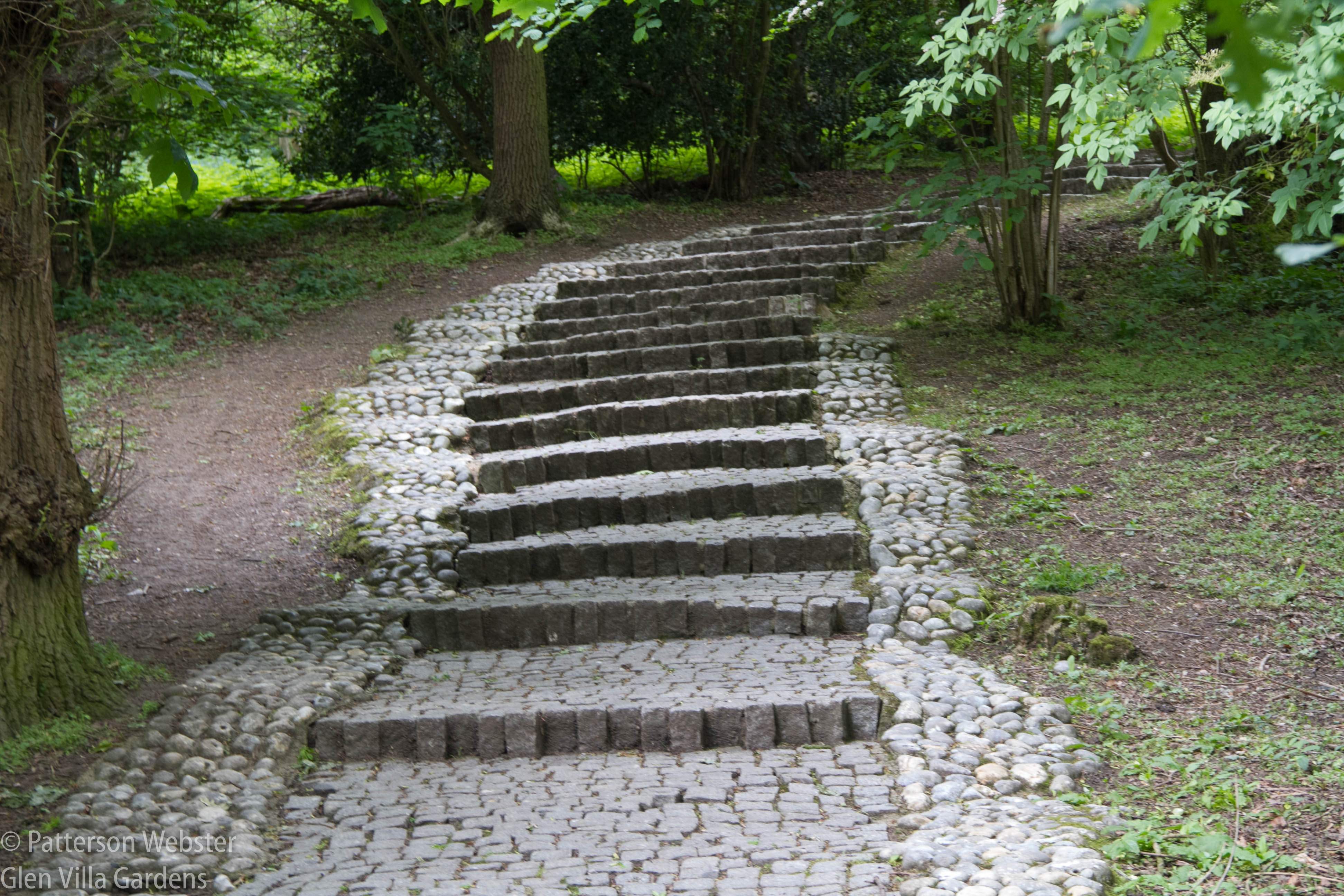
Each step on the path is different and each is hand-laid.
Paths take you on journeys and you never know exactly where the journey will end. Or when.
Walking Timelines, the 3 km trail at my garden Glen Villa, I sometimes remember the sense of awe I felt at the Kennedy Memorial. I walked that path in May 2016 and described the experience in a blog post you can read here. Remembering how I felt at the time is one reason I continue to find this path the most affecting I’ve ever walked.
Is there a path that stands out for you?






